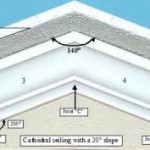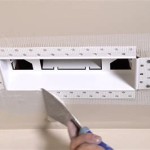Can You Paint a Ceiling Fan Black?
Painting a ceiling fan black can dramatically update a room's aesthetic, adding a touch of modern elegance or industrial chic. However, the process requires careful preparation and execution to ensure a professional-looking finish. This article provides a comprehensive guide to painting a ceiling fan black, covering essential aspects from preparation to painting techniques.
Key Considerations Before Painting
Several factors should be considered before embarking on this project. Evaluating these points will contribute to a smoother process and a more satisfactory outcome.
- Fan Material: Different materials require different paint types. Metal fans are ideal for painting, while plastic fans may require specialized primers for proper adhesion.
- Existing Finish: A glossy finish will need to be lightly sanded to create a better surface for the new paint to adhere to.
- Fan Location: Consider the surrounding area and protect it from paint splatter. Outdoor fans require weather-resistant paint.
Preparing the Workspace
Proper workspace preparation is crucial for a clean and efficient painting process, minimizing cleanup and ensuring the safety of the surrounding environment.
- Disassemble the Fan: Carefully remove the fan blades, light fixtures, and any other detachable parts. This allows for more thorough painting and prevents overspray.
- Protect the Surroundings: Cover the floor and any nearby furniture with drop cloths or plastic sheeting.
- Ventilation: Ensure adequate ventilation in the work area to dissipate paint fumes.
- Cleaning the Fan Parts: Clean the fan parts thoroughly with a degreaser or mild detergent to remove dust, grease, and grime. This ensures proper paint adhesion.
Priming the Fan
Primer creates a smooth, uniform base for the paint, improving adhesion and color consistency. The right primer depends on the fan material.
- Primer Selection: Choose a primer specifically designed for the fan material (metal, plastic, or wood). For metal fans, a metal primer is recommended.
- Application: Apply a thin, even coat of primer to all surfaces to be painted using a brush, roller, or spray paint.
- Drying Time: Allow the primer to dry completely according to the manufacturer's instructions before applying the topcoat.
Painting the Fan
The painting stage requires patience and attention to detail to achieve a professional-looking finish. Choosing the correct paint and application technique is essential.
- Paint Selection: Choose a high-quality paint designed for interior or exterior use, depending on the fan's location. For a durable finish, consider using a semi-gloss or satin paint.
- Application Method: Spray painting provides the smoothest finish, particularly for intricate details. Brushing or rolling can also be effective for larger surfaces.
- Multiple Coats: Apply multiple thin coats of paint, allowing each coat to dry completely before applying the next. This ensures even coverage and prevents drips.
- Technique: Use smooth, even strokes when brushing or rolling. If spray painting, keep the can a consistent distance from the surface to avoid uneven application.
Reassembling the Fan
Once the paint is completely dry, the fan can be reassembled. Proper reassembly ensures the fan functions correctly and maintains its structural integrity.
- Careful Handling: Handle the painted parts carefully to avoid scratches or damage.
- Reverse Disassembly Steps: Reassemble the fan by following the disassembly steps in reverse order.
- Secure Fasteners: Ensure all screws and other fasteners are tightened securely.
- Testing Functionality: Once reassembled, test the fan to ensure it operates smoothly and quietly.
Maintaining the Painted Finish
Regular maintenance will help preserve the new black finish and extend the life of the paint job.
- Regular Dusting: Dust the fan blades regularly with a soft cloth or duster to prevent dust buildup.
- Occasional Cleaning: Clean the fan periodically with a damp cloth and mild detergent to remove dirt and grime.
- Avoid Abrasive Cleaners: Avoid using abrasive cleaners or scouring pads, as these can damage the painted finish.
Troubleshooting Common Issues
Addressing potential challenges preemptively can prevent frustration and ensure a successful outcome.
- Dripping Paint: Apply thin coats of paint to prevent dripping. If drips occur, gently sand the affected area once the paint is dry and reapply a thin coat.
- Uneven Coverage: Ensure adequate lighting to identify and correct any areas of uneven coverage. Apply additional thin coats as needed.
- Paint Not Adhering: If the paint is not adhering properly, the surface may not have been cleaned or primed sufficiently. Lightly sand the affected area and reapply primer and paint.

Chalk Painted Ceiling Fan Makeover Easy Home Decor Project

Another Ceiling Fan Makeover And How Not To Paint A Bedroom Painting Fans

Renew Your Ceiling Fan How To Save 185

The Top Photos Are Of Awful Dated Ceiling Fan In My Game Room Bottom Finished Produ Makeover Painting Fans

My Two Cents On Ceiling Fans Emily A Clark

How To Paint Ceiling Fan Blades Sunshine And Rainy Days

Painting Ceiling Fan Crafty In Malta

How To Update An Old Ceiling Fan On A Budget Worst The Block

My Two Cents On Ceiling Fans Emily A Clark

Craftmade Rugged 52 In Flat Black Painted Nickel Indoor Outdoor Smart Cage Ceiling Fan With Light And Remote 6 Blade The Fans Department At Com
Related Posts








